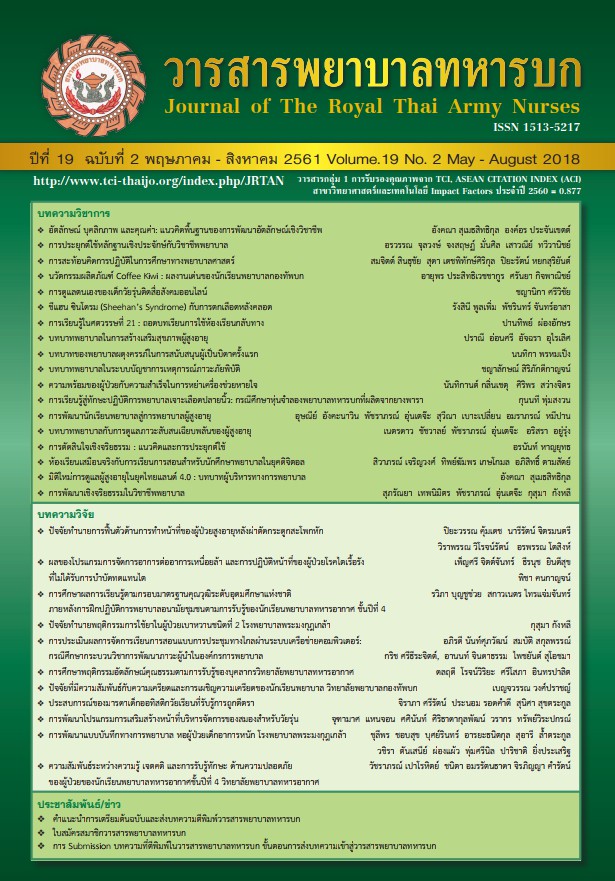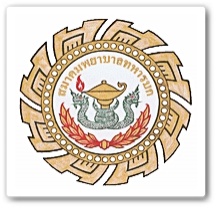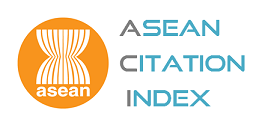ปัจจัยทำนายพฤติกรรมการใช้ยาในผู้ป่วยเบาหวานชนิดที่ 2 โรงพยาบาลพระมงกุฎเกล้า
คำสำคัญ:
ผู้ป่วยเบาหวานชนิดที่ 2, ความเชื่อที่เกี่ยวข้องกับพฤติกรรม, พฤติกรรมการใช้ยาบทคัดย่อ
การวิจัยครั้งนี้มีวัตถุประสงค์เพื่อศึกษาปัจจัยส่วนบุคคล ความเชื่อที่เกี่ยวข้องกับพฤติกรรม และพฤติกรรมการใช้ยาของ ผู้ป่วยเบาหวานชนิดที่ 2 และปัจจัยทำนายต่อพฤติกรรมการใช้ยาของผู้ป่วยเบาหวานชนิดที่ 2 กลุ่มตัวอย่าง คือ ผู้ป่วยเบาหวาน ชนิดที่ 2 ที่มารับบริการในคลินิกเบาหวาน แผนกผู้ป่วยนอก โรงพยาบาลพระมงกุฎเกล้า ระหว่างเดือนสิงหาคม ถึงเดือนกันยายน พ.ศ. 2559 จำนวน 70 คน เครื่องมือที่ใช้ในการวิจัย ประกอบด้วย แบบสอบถามปัจจัยส่วนบุคคล ความเชื่อที่เกี่ยวข้องกับพฤติกรรม และพฤติกรรมการใช้ยาของผู้ป่วยเบาหวานชนิดที่ 2 มีค่าความเชื่อมั่นเท่ากับ 0.80 และ 0.73 ตามลำดับ วิเคราะห์ข้อมูลโดยใช้สถิติ ความถี่ ร้อยละ ค่าเฉลี่ย ส่วนเบี่ยงเบนมาตรฐาน ค่าสัมประสิทธิ์สหสัมพันธ์ของเพียร์สัน และความถดถอยพหุคูณแบบ Enter ผลการศึกษา พบว่า ผู้ป่วยเบาหวานชนิดที่ 2 โรงพยาบาลพระมงกุฎเกล้า ส่วนใหญ่เป็นเพศหญิง คิดเป็นร้อยละ 51.40 มีอายุระหว่าง 60-79 ปี (ร้อยละ 64.30) สถานภาพสมรสและอยู่กับคู่สมรส (ร้อยละ 82.90) ระดับการศึกษาอยู่ในระดับมัธยมศึกษา ปีที่ 6/ปวช. (ร้อยละ 32.90) รายได้ต่อเดือนมากกว่า 20,000 บาท (ร้อยละ 40) และระยะเวลาการเป็นโรคเบาหวาน 10 ปีขึ้นไป (ร้อยละ 47.20) ผู้ป่วยเบาหวานชนิดที่ 2 ส่วนใหญ่มีความเชื่อที่เกี่ยวข้องกับพฤติกรรม และพฤติกรรมการใช้ยาอยู่ในระดับเหมาะ สมมาก (ร้อยละ 84.30, 92.90 ตามลำดับ) ความเชื่อที่เกี่ยวข้องกับพฤติกรรมสามารถทำนายพฤติกรรมการใช้ยาของผู้ป่วยเบาหวาน ชนิดที่ 2 ได้ร้อยละ 35.1 อย่างมีนัยสำคัญทางสถิติที่ระดับ .001 (R2 = .351, p<.05) และปัจจัยส่วนบุคคลไม่สามารถทำนาย พฤติกรรมการใช้ยาของผู้ป่วยเบาหวานชนิดที่ 2 ความเชื่อที่เกี่ยวข้องกับพฤติกรรมสามารถทำนายพฤติกรรมการใช้ยาของผู้ป่วยเบาหวานชนิดที่ 2 ได้ ดังนั้นพยาบาล ควรวางแผนการพยาบาลโดยการสนับสนุนพฤติกรรมของผู้ป่วยให้มีพฤติกรรมการใช้ยาที่เหมาะสมสอดคล้องตามความเชื่อที่เกี่ยวข้อง กับพฤติกรรม ประกอบด้วย ความเชื่อเกี่ยวกับพฤติกรรม ความเชื่อเกี่ยวกับแหล่งอ้างอิง และความเชื่อเกี่ยวกับการควบคุมของ ผู้ป่วยแต่ละคน
Downloads
References
2. Ministry of public health. Public Health Statistics: The number and the rate of non-communicable chronic disease. Bangkok; 2016. (in Thai).
3. Diabetes registry statistics for diabetes clinic at Phramongkutklao Hospital. Bangkok; 2015. (in Thai).
4. Sarinpakorn W. et al. Diabetes. 2th ed. Bangkok: Bangkok Wetchasan Printing House; 2010. (in Thai).
5. Diabetes Association of Thailand under The Patronage of Her Royal Highness princess Maha Chakri Sirindhorn. Guidelines for Diabetes. Bangkok: Aroonprinting; 2014. (in Thai).
6. Ajzen I. The theory of planned behavior. Organization Behavior & Human Decision Processes. 1991; 50: 179-211.
7. Chaisri K. Na Ayuthya S.K. Puwarawuttipanit W. and Peerapatdit T. Factors Predicting Medication Use Behaviors of Type 2 Diabetic Patients. Journal of Nursing Science. 2013; 31(3): 67-75. (in Thai).
8. Sukunan T. Meksuk N. and Wongsara A. Factors affecting glycemia control behavior of Diabetes mellitus patients in Bansuan Tambon Health Promoting Hospital, Chonburi Province. Journal of Phrapokklao Nursing College. 2016; 27(1): 93-102. (in Thai).
9. Fishbein M. and Ajzen I. Predicting and Changing Behavior: The Reasoned Action Approach. New York: Taylor and Francis Group; 2010.
10. Fishbein M. and Ajzen I. The Influence of Attitudes on Behavior. In: Albarracín D. Johnson B.T. Zanna M.P. editors. The handbook of attitudes.
New York: Lawrence Erlbaum Associates; 2005.p.173-221.
11. Polit and Beck. Nursing Research: Generating and Assessing Evidence for Nursing Practice. 8th ed. Philadelphia: lippincott williams & wilkins; 2008.
12. Ajzen I. and Manstead A.S.R. Changing healthrelated behaviors: An approach based on the theory of planned behavior. In K. van den Bos M. Hewstone J. de Wit H. Schut & M. Stroebe (Eds.), The scope of social psychology: Theory and applications. New York: Psychology Press; 2007. p. 43-63.
13. Rokeach Milton. The nature of human values. New York: The Free press; 1973.
14. Becker M. H. The Health Belief Model and Sick Role Behavior. Health Education Monographs. 1974; 2: 409-417.
15. Chongchareon W. Kahawong W. Apichato A. Sangchandr O. Chukumneard P. Boonsin K. et al. A self-care promotion model for controlling blood sugar in type 2 diabetes. Songkla Med J. 2008; 26(1): 71-84. (in Thai).
16. Thompson A.A. and Strickland A. J. Strategic management: Concepts and cases. 11thed. Boston: Mc Graw-Hill; 1999.
17. Konglieam O. Biosocial factors and health locus of control effecting selfcare behavior of diabetes mellitus patients in Chainat Hospital [dissertation]. Bangkok: Srinakharinwirot University; 2009. (in Thai).
18. Noinonthong K. Health locus of control and self-care behavior in diabetes mellitus patients at Namphong Hospital in Namphong district Khon Kaen Province. [dissertation]. Khon Kaen: Khon Kaen University; 1994. (in Thai).
19. Supachaipanichpong P. Vatanasomboon P. Tansakul S. and Chumchuen P. Knowledge and Beliefs in Medication Use among Diabetic Patients with Non-medication Adherence. Veridian E-Journal Science and Technology Silpakorn University. 2014; 1(1): 1-12. (in Thai).
20. Chaiyasamut S. and Promra W. Guidelines for Developing Knowledge, Attitude, and Blood Sugar Controlling Behaviors of Diabetic Patients with Non-Insulin Dependence at Pathumthani. Journal of Mahamakut Graduate School (Humanities and Social Sciences). 2017; 15(2): 111-123. (in Thai).
21. Mongkolchaipak T. Pichayapaiboon S. and Sangviroon A. Factors Affecting Medication Adherence of Diabetic Patients at Police General Hospital. Thai Journal of Pharmacy Practice. 2015; 7(1): 47-59. (in Thai).
22. Kanglee, K. Factors Associated with Glycemic Control among People with Type 2 Diabetes Mellitus at Phramongkutklao Hospital, Bangkok. Journal of the Royal Thai Army Nurses. 2014; 15(3): 256-268. (in Thai).
23. Kitreerawutiwong K. Kingnetr G. Saengpak C. and Wongsawang N. Factor Influencing Diabetes Self-Management Behavior among Type 2 Diabetes Mellitus Patients. Journal of the Royal Thai Army Nurses. 2017; 18(3): 192-200. (in Thai).
Downloads
เผยแพร่แล้ว
How to Cite
ฉบับ
บท
License
บทความหรือข้อคิดเห็นใดใดที่ปรากฏในวารสารพยาบาลทหารบกเป็นวรรณกรรมของผู้เขียน ซึ่งบรรณาธิการหรือสมาคมพยาบาลทหารบก ไม่จำเป็นต้องเห็นด้วย
บทความที่ได้รับการตีพิมพ์เป็นลิขสิทธิ์ของวารสารพยาบาลทหารบก
The ideas and opinions expressed in the Journal of The Royal Thai Army Nurses are those of the authors and not necessarily those
of the editor or Royal Thai Army Nurses Association.






